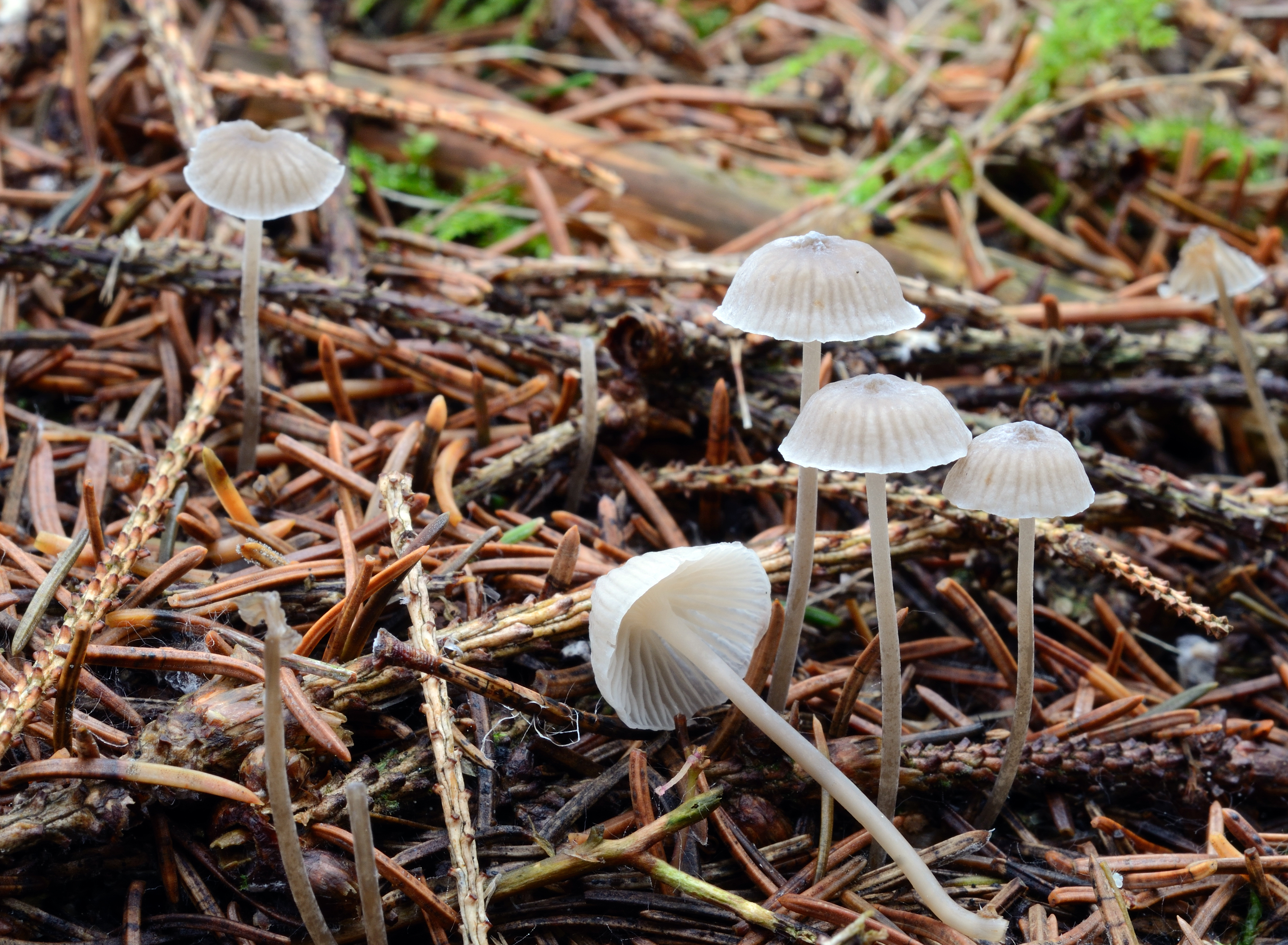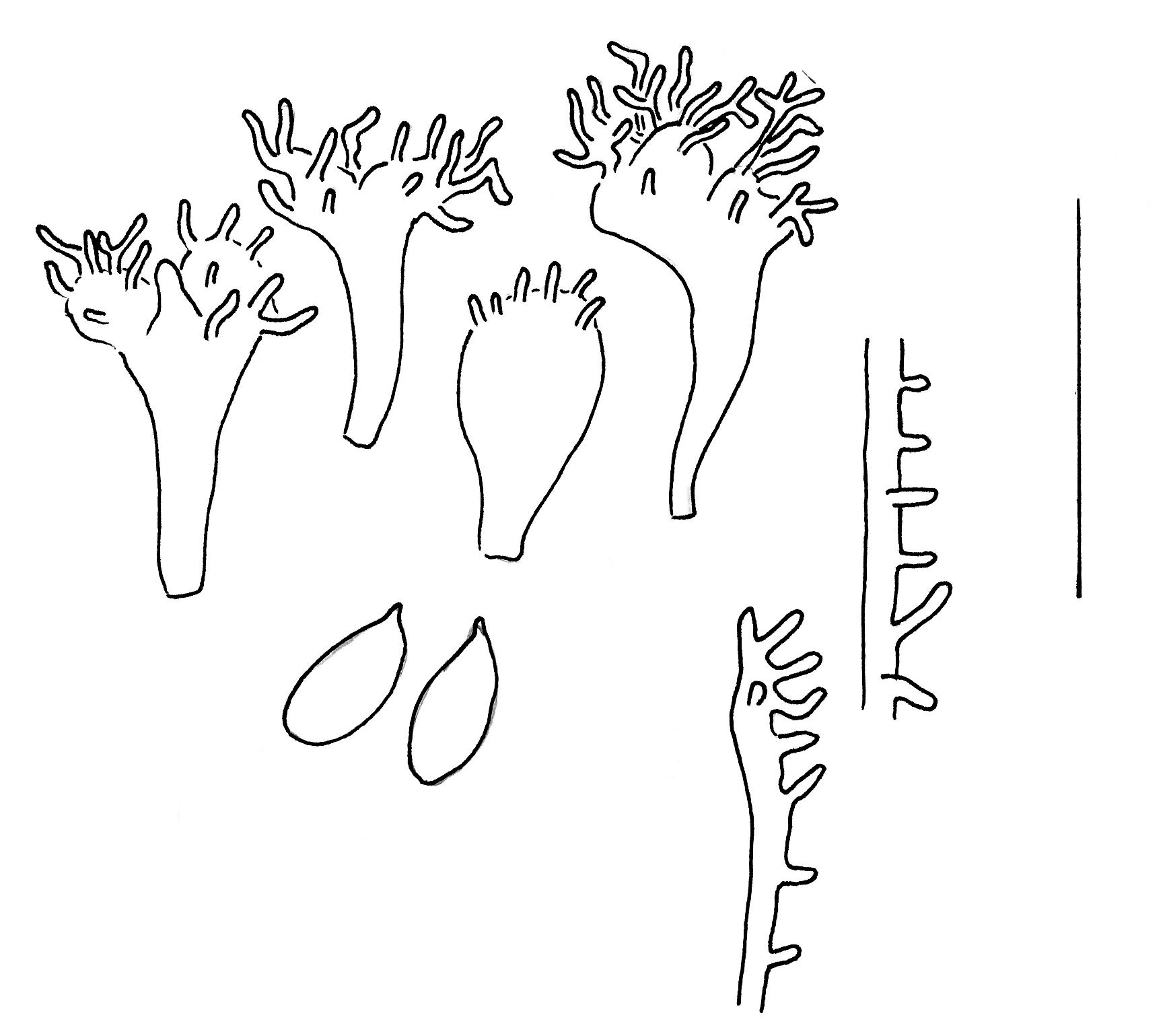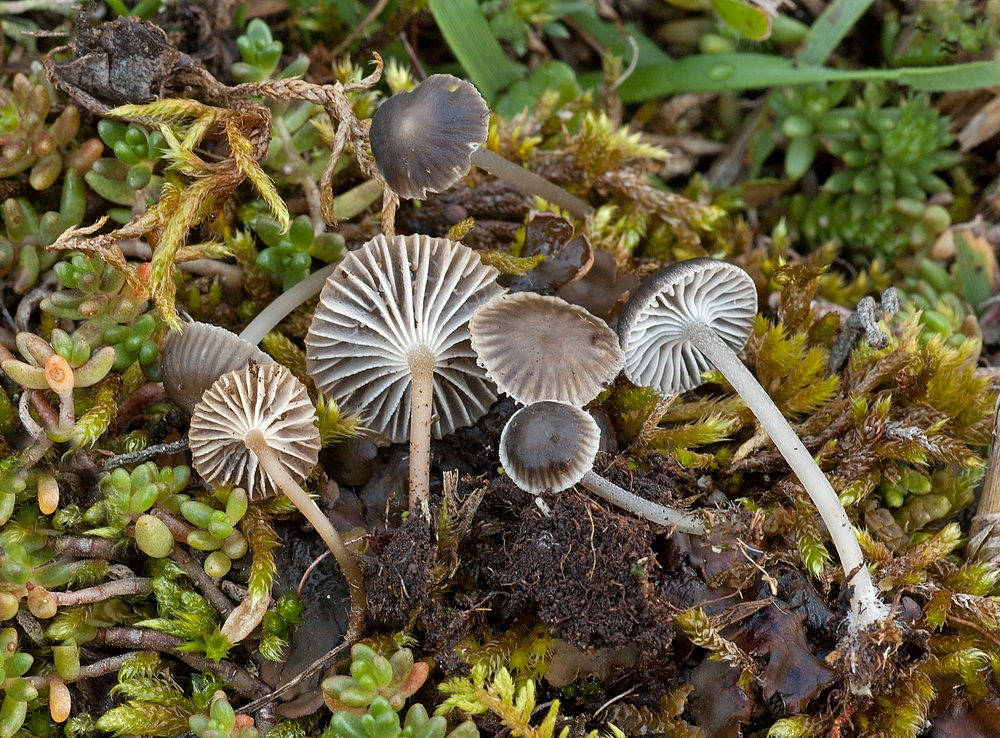Mycena cinerella
Mycena cinerella
Description
Cheilocystidia, spores and hyphae of the cortical layer of the stem.
Cap 4-15(-19) mm across, conical, campanulate, convex to almost applanate, sometimes depressed or with a small papilla, sulcate, translucent-striate, hygrophanous, pale grey to dark grey, usually paler at the margin, less often blackish brown to greyish brown. Gills 12-26 reaching the stem, broadly adnate to deeply decurrent, the edge concave, dorsally intervenose with age, dark grey to pale grey, the edge paler. Stem 20-40 x 0.5-2 mm, hollow, cylindrical, pruinose at the apex, glabrous below, whitish grey at the apex, darker grey below; base covered with white fibrils. Odour and taste farinaceous. Basidia 27-30 x 7-9 µm, slenderly clavate, 2- or 4-spored. Spores from 4-spored basidia 7-10.5 x 3.5-6 µm, Q = 1.6-1.9, pip-shaped, amyloid; from 2-spored basidia 9-12.5 x 4.5-7 µm, Q = c.1.9. Cheilocystidia 10.5-25 x 5.5-12 µm, forming a sterile band, clavate, apically often divided into several heads, covered with fairly few to numerous, unevenly spaced, rather coarse, simple to furcate excrescences 3.5-13 x 1-2.5 µm. Pleurocystidia absent. Lamellar trama dextrinoid. Hyphae of the pileipellis 2.5-4.5 µm wide, somewhat gelatinized, covered with simple to much branched excrescences 1.5-18 x 1-2 µm that tend to form dense masses. Hyphae of the cortical layer of the stem 1-3.5 µm wide; diverticulate, terminal cells 4-9 µm wide, variously shaped. Clamps present in 4-spored form and absent in 2-spored form.
Ecology and distribution
Gregarious among fallen leaves of deciduous trees, and more predominantly on needles of coniferous trees in various habitats, mostly on acid soils. Also found in alpine sites. Late autumn. Widespread and rather common.



